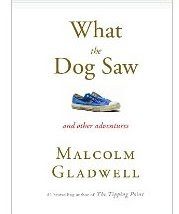In summary – it is another brilliant book by Malcolm Gladwell. A little difficult to read – he uses so many names, numbers and you have to skip them while reading. Hi Malcolm here is a suggestion – use footnotes next time – your book will be half its size and will sell well.
Here are some interesting snapshots from the book I still remember.
Ketchup and Spaghetti sauce
This chapter is a follow up to his TED talk where he explains how there is no one perfect “taste” but there are perfect “tastes”. There are so many spaghetti sauce varieties in the market and here is an enterprising person who tries to apply the same model to Ketchup and tries to go against Heinz – the market leader. However he is not as successful.
What I learnt from this chapter is that each product / market is different – what works in one will not work in another. When the inventor of “tastes” model was asked why it did not work for Ketchup he shrugged off saying “Ketchup is different”.
Enron fiasco
This is an interesting chapter where Gladwell argues that Enron never hid the dismal finances it had. It was all out in the open in the thousands of pages of SEC filings it did. So when the CEOs were taken to trial it was pronounced that they did not disclose the truth – the judge was way off the mark. Yes, they were responsible for the mess that got created and were mute spectators to it – however they never hid the information. The point he tries to make is – it is difficult or at times even impossible to pick the “real information” hidden beneath the mountain of information.
How are we going to solve the problem of information over load? Is there another Enron which is quietly filing its annual reports with disaster hidden somewhere deep inside?
Talent myth
This is about McKinsey’s philosophy of hiring the best and staffing your company with them. This is what they advised Enron too. During performance appraisal, they split the employees into A,B and C groups. A – are the best of the best – the ones who got promoted got a huge bonus. B – are the mediocre ones – made a decent salary and encouraged to become As. Cs are to be fired. They hired from all Ivy leagues, had fancy power points, ideas, business models – and the hot shots killed the company in the end.
In contrast, Walmart, P&G etc. do not hire hotshots, have a “mediocre” performance appraisal policy, conventional salary structure – and are still around and will be around for another century.
So, for big enterprises – perhaps the uber talents are not good. They have their place in the ecosystem and they would thrive well in smaller firms that are trying to become big, research and development companies, startups etc.
The above is just a snapshot of the chapters in the book. There are more interesting stories – dog training, hair dye market, FBI investigators on serial killers – and it breaks all the myths/stereotypes/conventions.
Very entertaining and very informative. Thumbs up!


